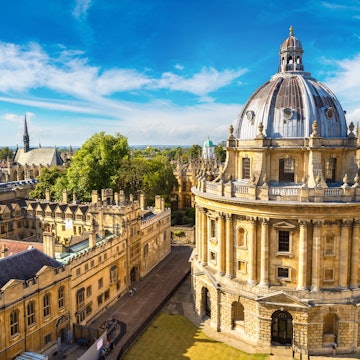
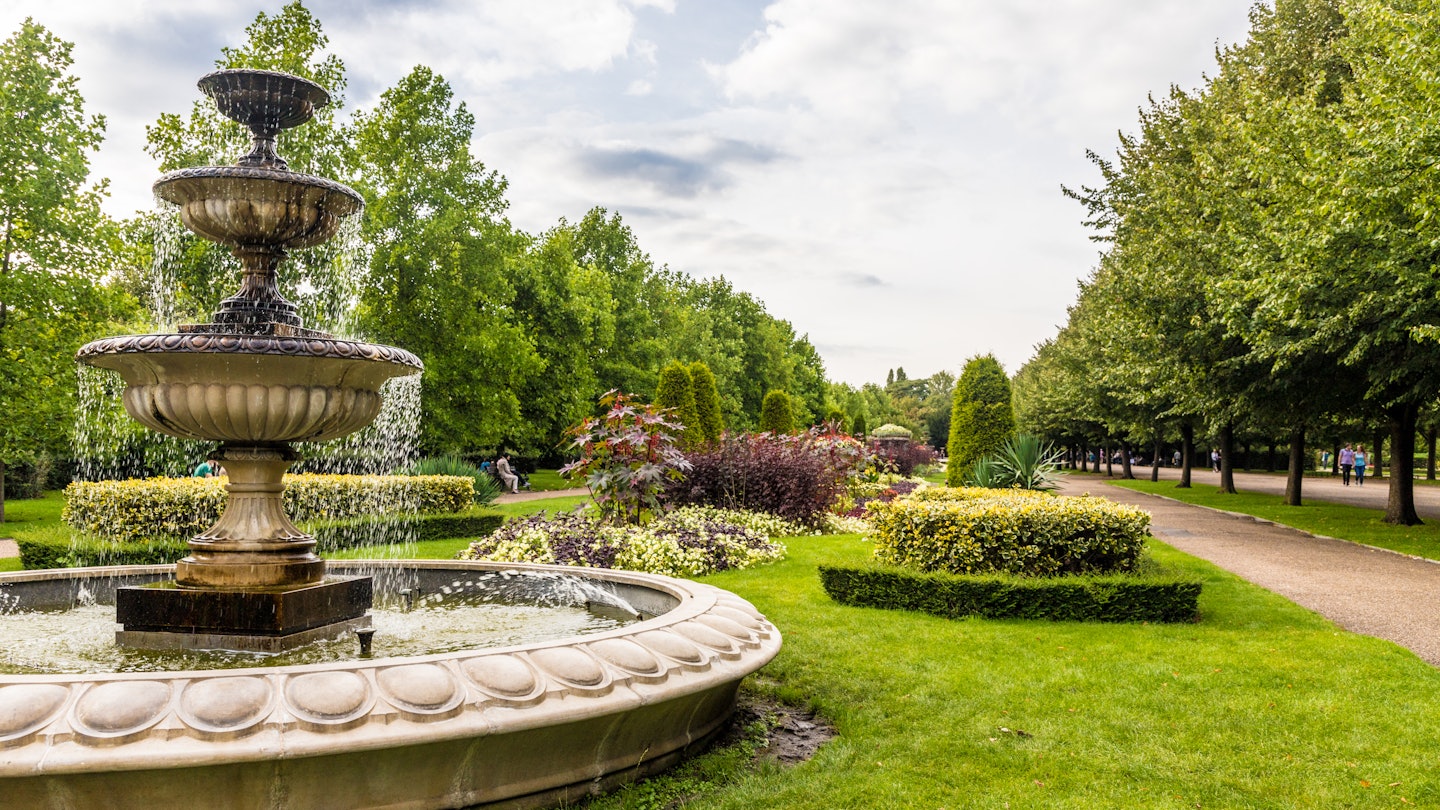
The Avenue Gardens in Regent's Park, London. Chrispictures/Shutterstock
London knows how to do parks. It has more than any other city on Earth, aside from Tokyo, with 11,000 valuable green spaces, including eight Royal Parks. These places are fundamental to life in the UK capital – trees’ lungs (or leaves) suck carbon out of often traffic-clogged neighborhoods, plus parks are tranquil places to find calm in a chaotic metropolis. And, just like London’s pubs in winter (which double as communal living rooms), parks become the heart of each community in fine weather.
London’s varied and often gargantuan parks are social, completely free places to explore and meet friends – perhaps while enjoying live music, swimming in open water, spotting wildlife or watching century-old plays in an outdoor theater. They’re also charming places to eat, read a book under an old oak tree, join an exercise class, or simply act out your favorite period drama.
Read on for our top London parks, all with different personalities.
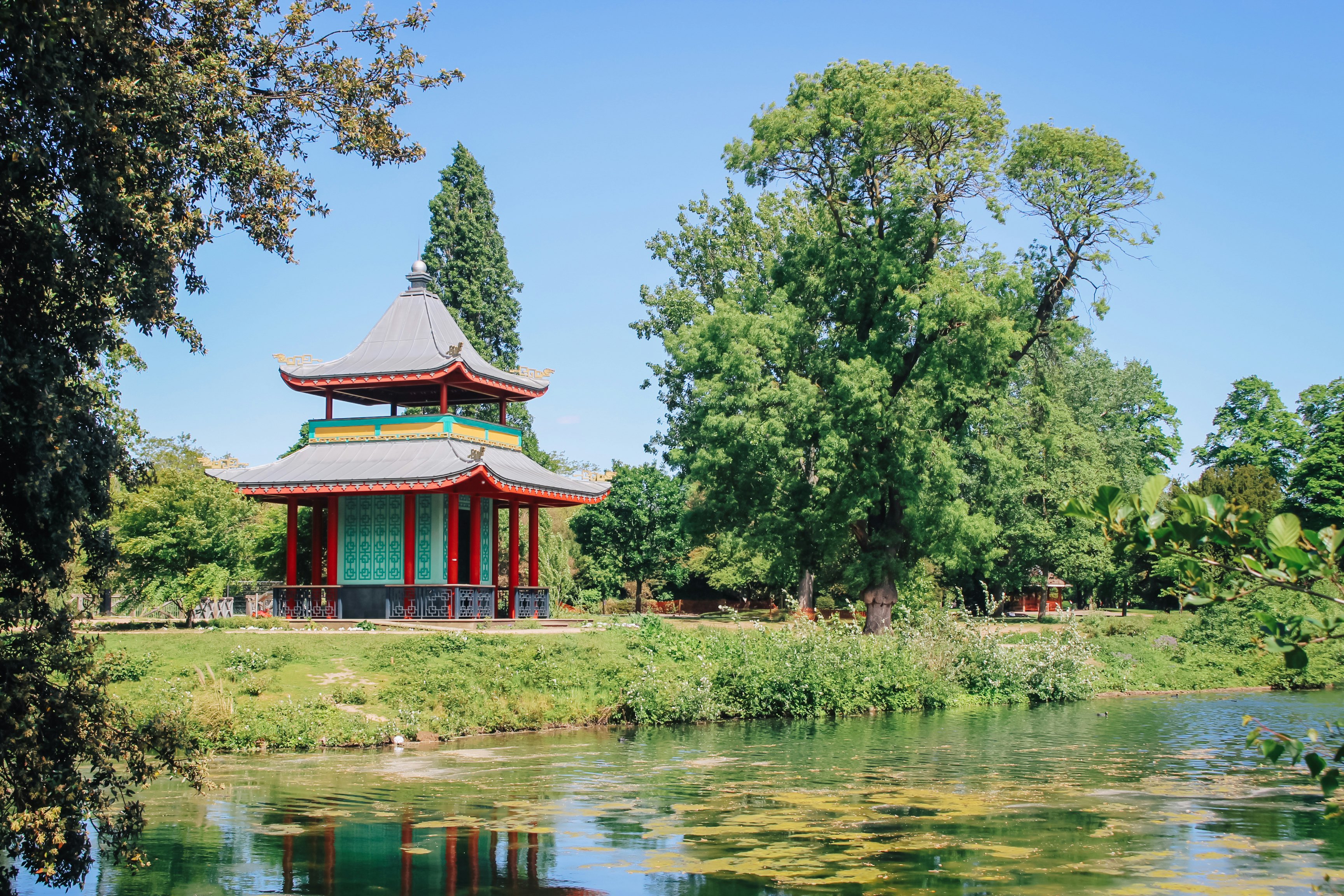
1. Victoria Park
Victoria Park (or Vicky Park as it’s known in East London) borders the traditionally working class areas of Bethnal Green, Bow and Hackney and was the area’s first public park opened by Queen Victoria in 1845. This buzzing vibrant canal-side space offers a microcosm of London life, with people from all walks of life roaming its well-manicured gardens and glorious lakes. Loved by various subcultures, it’s a hangout spot for roller skaters dancing to hip-hop, hipsters on fixie bikes and skateboarders shredding the park’s giant concrete bowl. It also has one of London’s best playgrounds with extra-long slides, suspension bridges and cargo nets to climb. Come at weekends to try dishes from independent food vendors in the pop-up market or attend a large-scale music festival in the summer months.
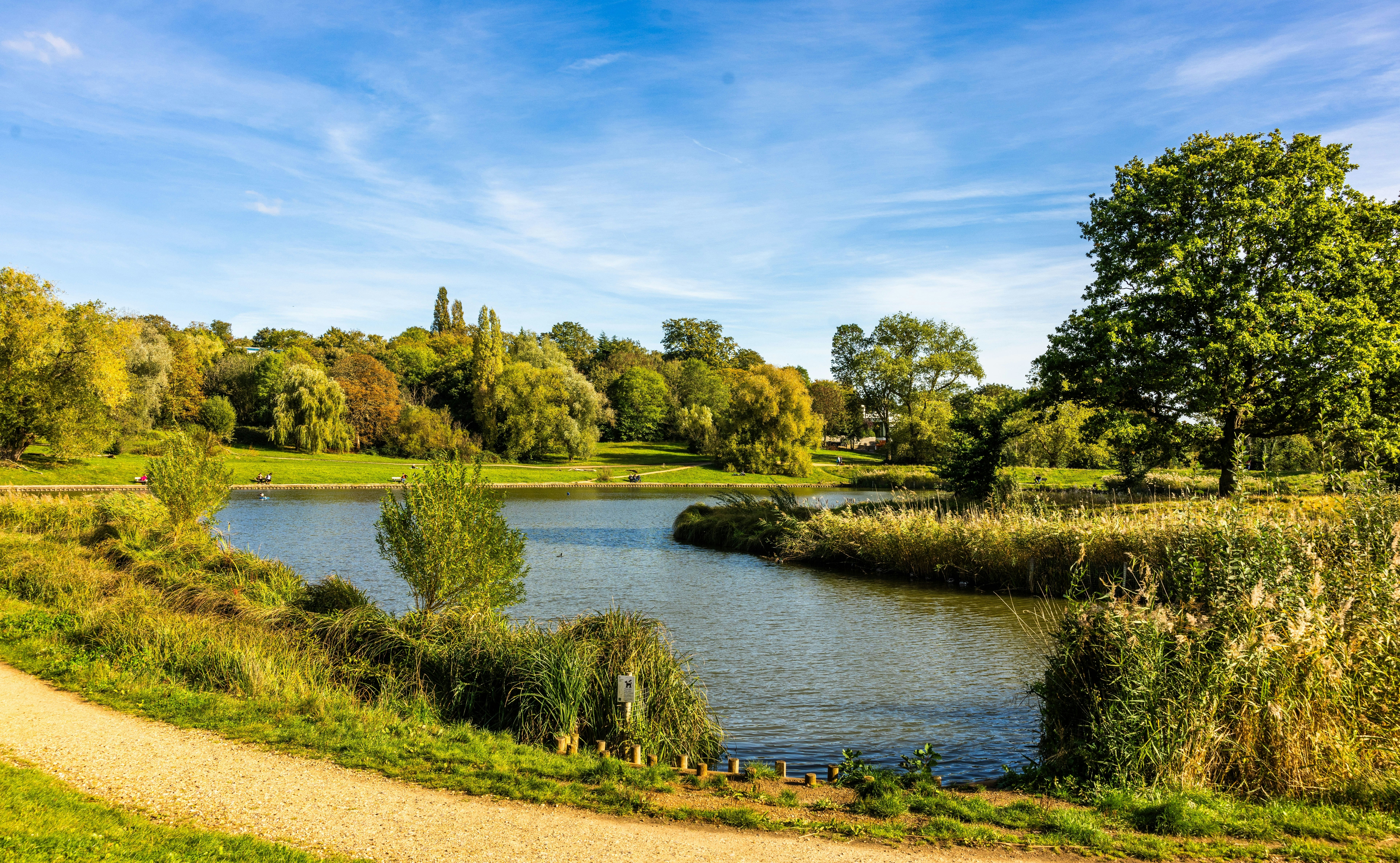
2. Hampstead Heath
Hampstead Heath, aka the Heath, is rugged and untamed compared to London’s manicured Royal Parks. It's a mystical place shrouded in literary legends, with rambling woodlands, hilly meadows and undulating grassy sprawls. Since the 18th century, folks have been wild swimming in its legendary Bathing Ponds, which are said to have rejuvenating properties. At the northern end of Hampstead Heath, surrounded by more than 100 acres of bucolic gardens, stands the free-to-visit neoclassical 17th-century mansion Kenwood House, filled with wonderful art and period furniture. Don’t leave without seeing the city sprawled out from the top of Parliament Hill.
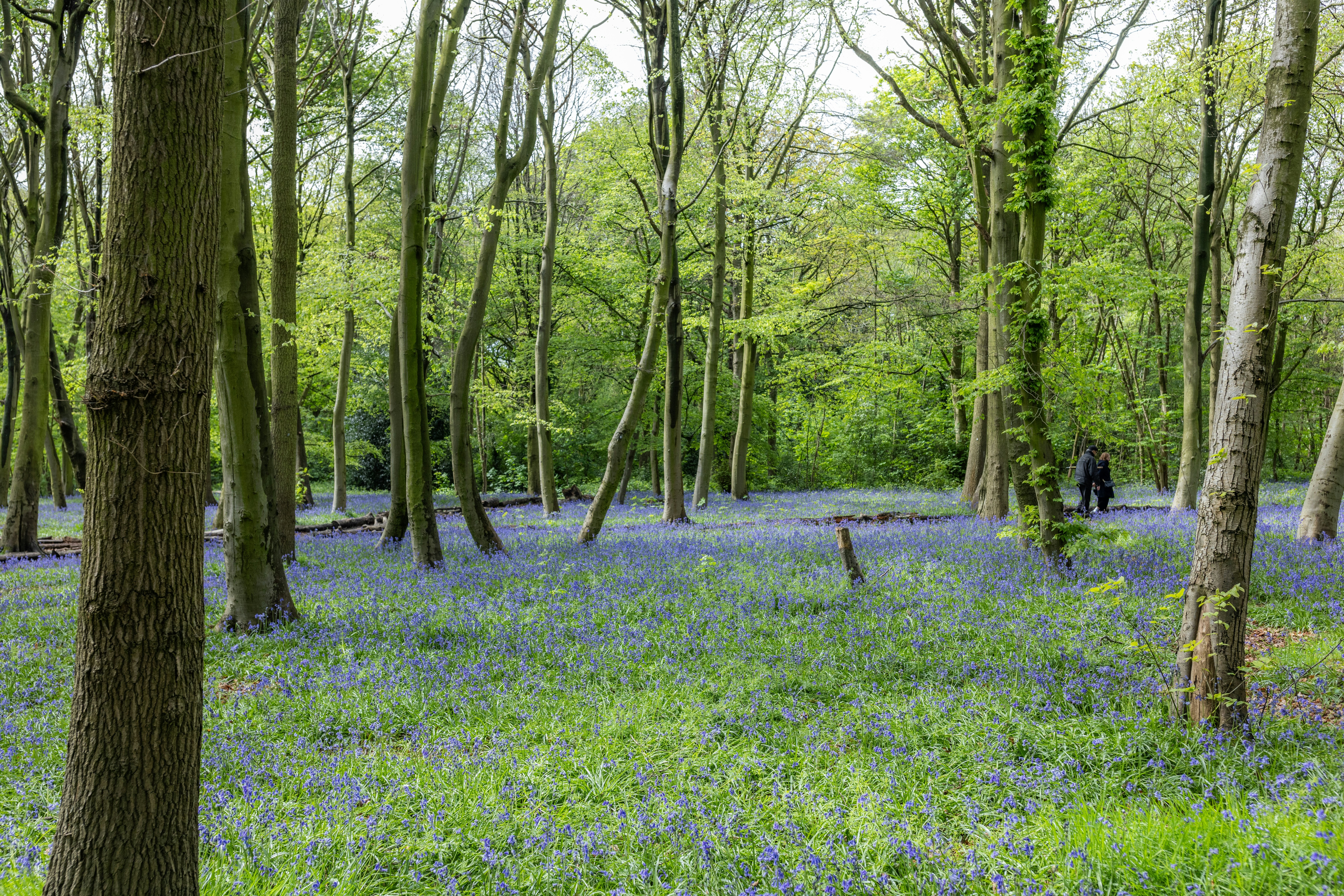
3. Wanstead Park
With untamed grassy lawns, ancient heaths, shaded woodlands dotted with wildflowers and ponds of birdlife, Wanstead Flats and Wanstead Park are a local secret in East London. The roughly 8-mile green area at the edge of Epping Forest can be accessed from Leytonstone, Forest Gate, Manor Park and Wanstead, but the most striking section is Wanstead Park, which has a cascade of five lakes fed by the River Roding. The Tea Hut acts as a meeting place in all weathers, while a community riding school offers pony treks for children along the park’s many trails and through ancient woods. Don’t miss the striking violet carpet of bluebells at Chalet Wood every spring, which has become an Instagram sensation.
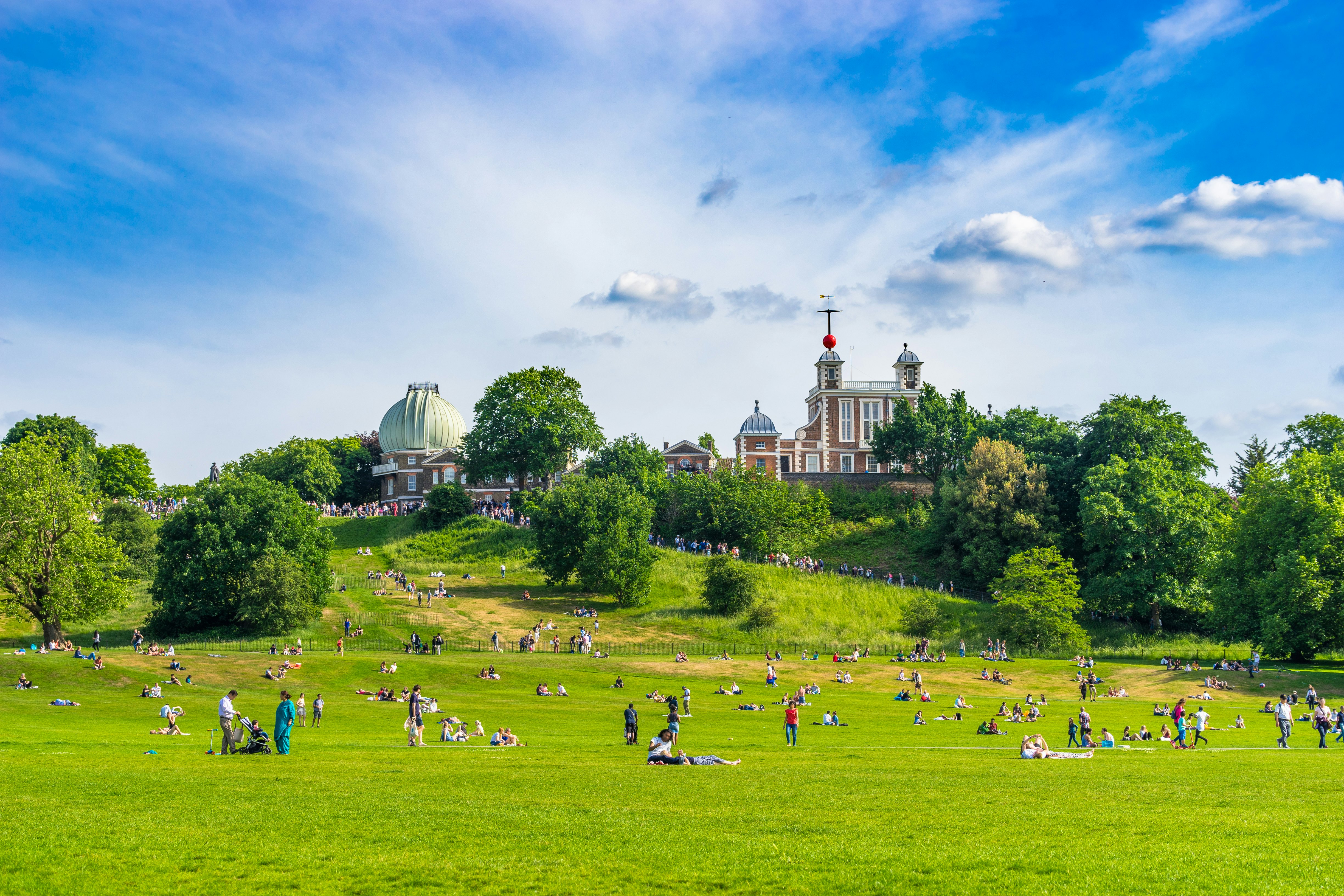
4. Greenwich Park
Former British Royal Navy base and maritime trade hub Greenwich is where the British advanced navigation and astronomy. Its delightful park, with a rose garden, snaking pathways and boating lake, is also home to the Prime Meridian line, which marks 0° longitude and from which all east–west distances in the world are measured. Climb the hill to stand on the line. Nearby, the Royal Observatory (which requires an entry fee) has historic telescopes and planetarium shows led by an expert astronomer. Take a moment to enjoy views of the past (Old Royal Naval College, established in 1873) and the future (soaring modern skyscrapers of Canary Wharf in the background).

5. Richmond Park
London’s largest Royal Park is a whopper. Its 2,718 acres of greenery make it the largest city parkland in Europe. It began as a designated hunting ground for King Charles I during the 17th century, and more than 600 deer still roam free here. It’s easy to spend a whole afternoon walking along many pathways under ancient oak trees, past ponds and through wild meadows. Hike 60 meters (196ft) up to King Henry's Mound for glorious city views – some 4,500 years ago this spot was a Bronze Age burial chamber.
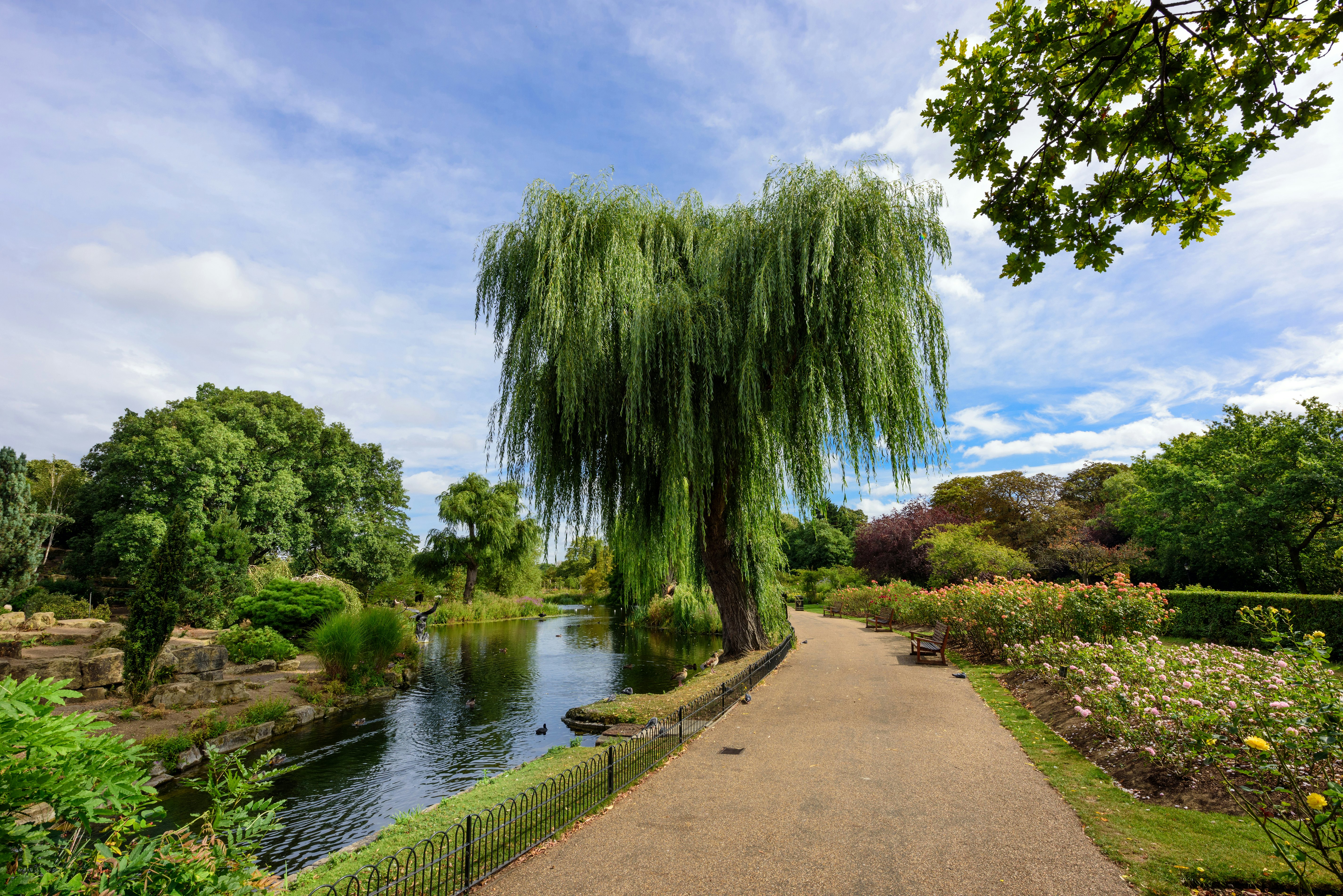
6. Regent’s Park
Outdoor spaces don’t get much more attractive than Regent’s Park, which was originally designed for the Prince Regent (who later became King George IV). The park not only has 150-year-old trees, rose gardens (with 20,000 roses of 400 varieties), tiered fountains, evergreen hedges, a display of 9,000 begonias in spring and ornate bandstands – it’s also home to more than 20,000 animals. The phenomenal London Zoo houses colobus monkeys, Sumatran tigers, pygmy hippos, penguins and Komodo dragons. To the south of the park, summer visitors can be transported back to the days of Shakespeare at the Regent’s Park Open Air Theatre. Throughout the year, keep your eyes peeled for wild hedgehogs – the park has one of the most significant populations of the spiny mammal in London.
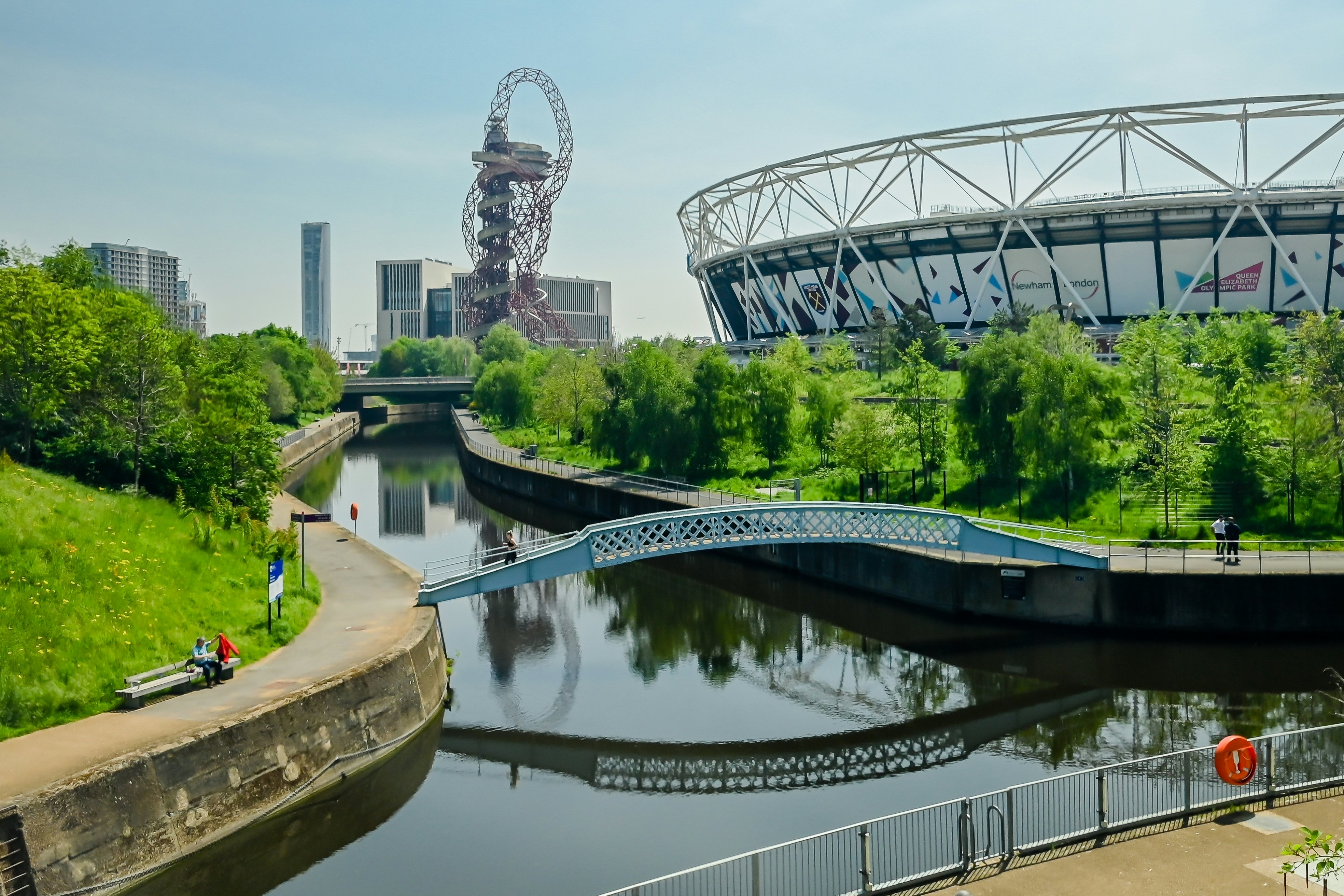
7. Queen Elizabeth Olympic Park
The giant 555-acre Queen Elizabeth Olympic Park was built for the 2012 Summer Olympics and Paralympics, complete with world-class sporting stadiums, before being converted into a fully fledged park on the borders of Stratford and Hackney Wick, Leyton and Bow. Here you can wander shaded woodlands, open meadows and muddy wetlands; swim in the former Olympic pool; ride the velodrome; or rent a bike to explore 21 miles of multi-use paths and trails and serene neighboring canal paths. It’s also dotted with great cafés, cultural attractions (such as the new V&A East), kids’ playgrounds, and some unique attractions including the world’s largest tunnel slide inside the ArcelorMittal Orbit sculpture designed by Anish Kapoor. Check the Queen Elizabeth Olympic Park website for maps of themed rambles, from an art trail and wildlife trail to an Olympic Legacy trail and Heritage trail.
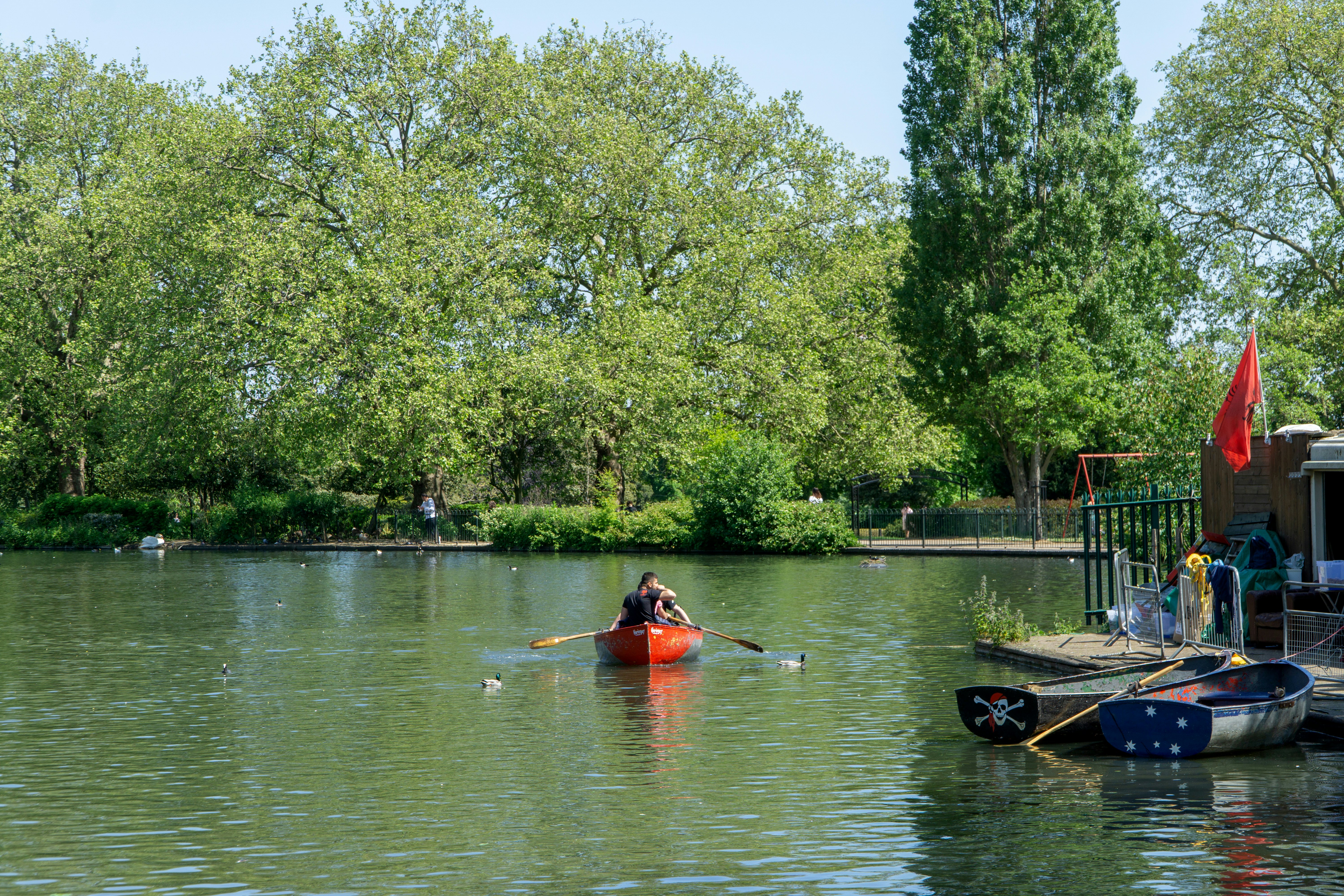
8. Finsbury Park
Dating back almost two centuries, hilly Finsbury Park is a North London gem sprawling more than 100 acres over grassy hills scattered with flowerbeds. Children love the giant playground here, with enormous nets to climb over and zipwire swings to conquer. The park still has a traditional Victorian boating lake offering boat rides, too. Or bring your sporting gear for the basketball and tennis courts, football pitches, baseball diamonds and an American football field. Visit in July for the park’s three-day hip-hop Wireless Festival. Previous headliners have included Kenny Allstar, Travis Scott and Skepta.







